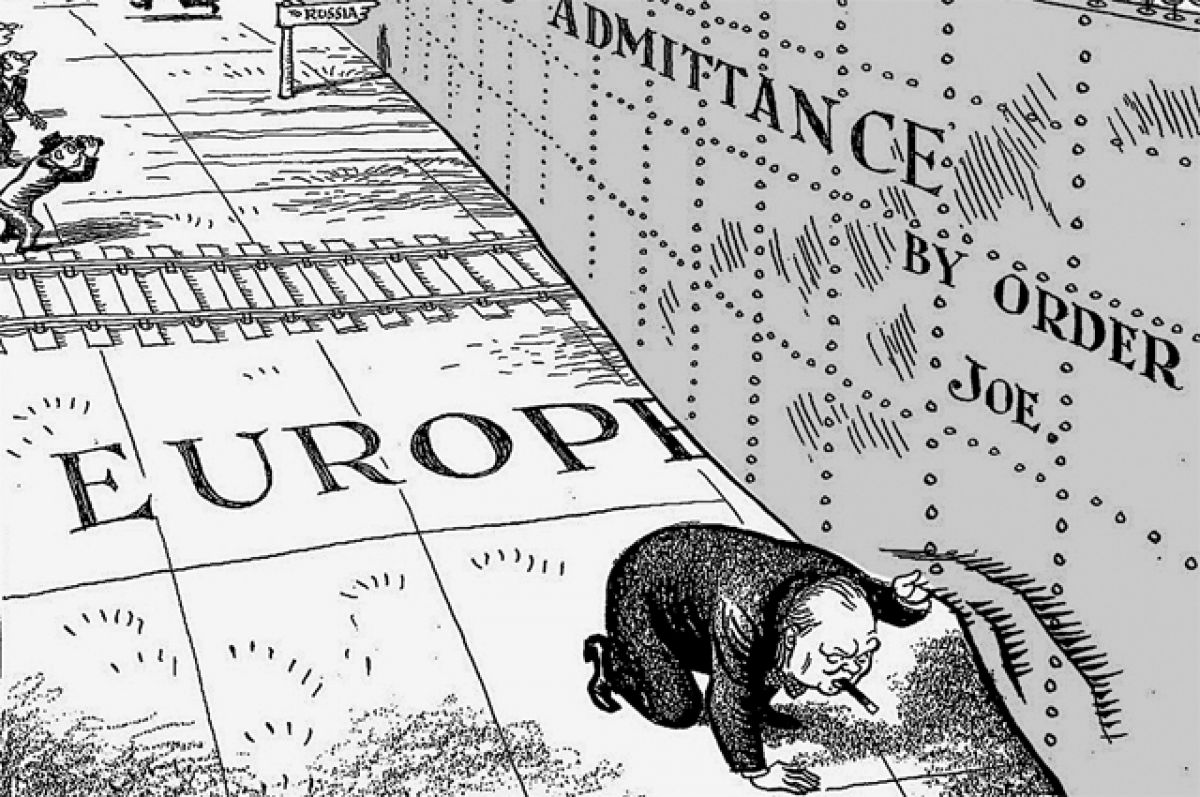“Iron Curtain” for Belarus: will there be a crack?
 The situation has not changed
The situation has not changed

The Lithuanian authorities are seriously concerned about the growing Belarusian diaspora in the country, associating intelligence, ideological, and economic risks with it. Therefore, Vilnius is closing additional border checkpoints, thereby trying to limit the flow of Belarusian migrants. However, while Lithuania is building an “iron curtain” around its neighboring country, Warsaw is preparing to lift it. Poland is considering the possibility of resuming railway passenger traffic with Belarus.
The Lithuanian National Security Commission reviewed proposals to reduce border risks, including those related to circumvention of sanctions and the activation of Belarusian intelligence services. In addition to the closure of the Lavoriškės and Raigardas checkpoints, the commission recommended stopping the disembarkation and pick-up of passengers at the railway checkpoint at the Kena border station. The idea was also voiced to reduce the number of permits issued to Belarusian and Lithuanian passenger carriers.
The head of the National Crisis Management Center, Vilmantas Vitkauskas, noted that the flow of Belarusian citizens has recently increased by 1.5 times. This requires “optimization of the process of managing these flows, concentration of technical means and even more detailed inspection of people, vehicles, and goods.”
Lithuanian Interior Minister Agne Bilotaite supports the closure of two checkpoints – she advocated this decision last year against the backdrop of the presence of the Wagner PMC in Belarus.
The Lithuanian government also recently approved the proposal of the Ministry of Foreign Affairs to extend the law on restrictions for citizens of Belarus and Russia for another year. At the same time, it is planned to supplement it with a provision for additional assessment and verification of Belarusian citizens entering Lithuania on Schengen visas. Now such checks are being carried out against Russians. Finland is also going to extend the closure of checkpoints on the border with Russia. This is due to the risks of an increase in the flow of migrants. Previously, migrants who had previously unsuccessfully tried to cross the border in Belarus also tried to enter the European Union through Finland.
In turn, the leader of the Belarusian democratic forces, Svetlana Tsikhanouskaya, calls on the Lithuanian authorities not to build an “iron curtain”. However, the President of Lithuania Gitanas Nausėda urged people to come to terms with the new reality. He believes that the iron curtain between the West and the East has already fallen.
Lithuanian intelligence services and officials explain the restrictions against Belarusians by the unprecedented activity of the KGB, which is actively recruiting opposition and business representatives through social networks. According to the Lithuanian Migration Service, in 2023 the number of Belarusians who came to Lithuania increased to 60 thousand. Lithuanian authorities fear that with this trend in 2025 there will be about 100 thousand of them. This situation is a “red line”, after which intelligence threats become actual. There are also growing risks associated with demands for greater participation in political processes and the spread of the ideology of Litvinism, which Vilnius cannot allow. The Lithuanian authorities also consider the large diaspora of Russians, amounting to 22 thousand people, to be a risk zone.
While Lithuania is working on how to make life even more difficult for Belarusian migrants, Poland is considering the possibility of resuming passenger rail service with Belarus. In January 2024, an interdepartmental group on migration issues was created in Poland. It must formulate a new government strategy to respond to migration processes. Among the tasks is the development of changes to legislation, including a possible amendment to the regulations that blocked the rail transportation of passengers at Polish-Belarusian checkpoints. It is possible that it will again be possible to travel from Hrodna to Bialystok and from Brest to Terespol by train.
Until 2020, there were two railway checkpoints on the Belarusian-Polish border: “Brest-Terespol” in the Brest region and “Bruzgi-Kuznitsa” in the Hrodna region. Despite the fact that passenger traffic has been stopped since 2020, cargo transportation between Belarus and Poland continues. Passenger trains also do not travel from Poland to the Kaliningrad region of Russia. Today you can only get from Belarus to Poland by car or bus. The only working border crossing is Brest – Terespol. The Bruzgi-Kuznica checkpoint was closed in 2021 due to the migration crisis at the border, and the Berastawica-Bobrowniki checkpoint was closed in 2023 in response to the conviction of journalist Andrzej Poczobut.
Subscribe to our newsletter




Situation in Belarus
Constitutional referendum: main consequences


 Video
Video
How to count the political prisoners: are the new criteria needed?


 Video
Video
Paternalism In Decline, Belarusian Euroscepticism, And The Influence Of Russia


 Video
Video












